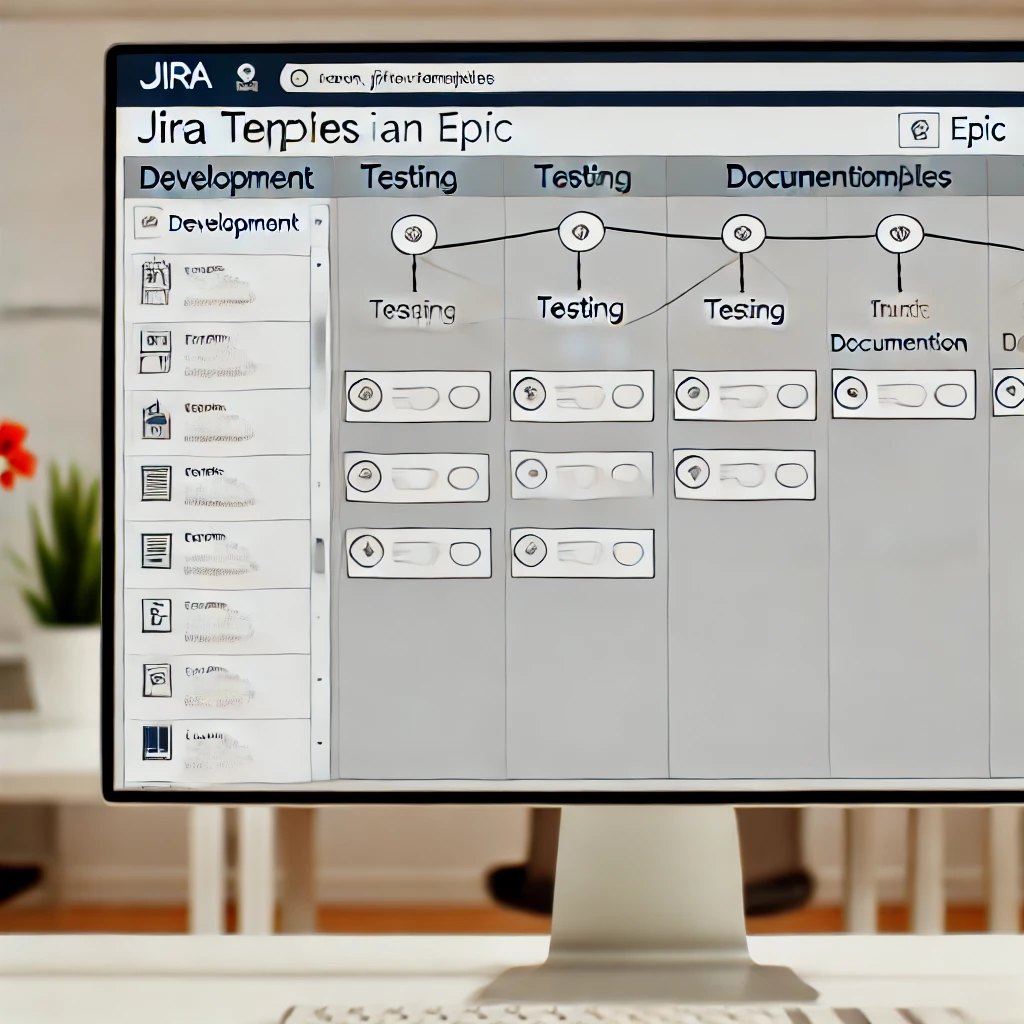The Jira Template Story: How One Simple Change Transformed Workflow

Teams often struggle with repetitive tasks in today’s work environment. From filling out the same fields to manually inputting data, these small but time-consuming activities slow down productivity and create inefficiencies across various departments.
The ‘Jira Template Story’ shows how teams transformed their work and refocused on what truly matters with a simple solution within Jira.
The Repetitive Task Problem
Let’s start by identifying a common pain point many teams share: manual task creation.
Software development teams, IT support, and marketing professionals often encounter situations where they create the same task multiple times, repeatedly filling in the same details.
Take an IT team, for instance. They need to log every new bug report or customer service request, which involves inputting the same fields repeatedly. This becomes a tedious chore that wastes both time and focus.
And it’s not just about time. Repeating manual processes increases the chances of human error. A forgotten field, a misnamed priority, or an incorrectly assigned task can derail the workflow. The consequences can range from delayed deliverables to poor customer experiences. This is where the concept of using Jira templates comes into play.
Jira Templates: An Overview
Jira templates are predefined, reusable configurations, allowing teams to create consistent tasks quickly. Instead of manually creating new tasks, you use a template with pre-populated fields, such as assignees, due dates, labels, and priorities, tailored to your team’s workflow.
You can customize these templates for various use cases, ensuring you account for every detail each time you create a similar task. Imagine an IT team that must log daily bug reports in the Jira Template Story context. Before using templates, every bug report was manually created.
The team would enter the bug type, assign it to a developer, prioritize the task, and add notes every time. But with a template in place, they now create the same report with a single click—everything is pre-filled based on their typical process.
The result?
A 50% increase in task creation efficiency and fewer mistakes. The repetitive grind of task creation was eliminated.
Real-World Use Cases: Streamlining Work Across Teams
Jira templates aren’t just for development teams; they can transform workflows across multiple departments.
Here are a few real-world examples:
- Human Resources: HR departments can use Jira task templates to onboard new employees. Every new hire needs the same tasks—account setup, document submission, and orientation scheduling. Instead of creating these tasks manually for each hire, HR teams can use templates that predefine these tasks with all the necessary steps, making onboarding seamless.
- Customer Support: Support teams often handle recurring issues. Using Jira templates, they can automate ticket creation for frequently encountered problems, ensuring consistent logging of details such as priority levels, common issue categories, and department assignments.
- Project Management: Project managers can utilize templates for recurring project milestones or tasks. For instance, they might have a predefined set of tasks for project kickoffs or reviews. Using Jira templates ensures these tasks are assigned, scheduled, and tracked without the risk of missing critical information.
The Technical Side of Jira Templates
Setting up a Jira template is straightforward but powerful.
Here is a quick rundown of the key features:
- Custom Fields: Templates allow users to pre-fill fields that matter most to their process, like task titles, descriptions, and priority levels.
- Variables: Advanced templates can include variables that are filled in dynamically based on the specific context. This ensures flexibility even when using templates for slightly varied tasks.
- Reusability: Templates can be reused across multiple teams or projects, making them a scalable solution for large organizations.
Whether you’re a technical lead or a project manager, these features make Jira templates invaluable. They ensure consistency, reduce errors, and dramatically improve task creation speed. This is exactly the power behind the Jira Template Story—it shows how even the simplest change can transform team productivity.
Why You Should Take Action Today?
Teams that have integrated Jira templates into their workflow have seen immediate benefits. The time saved alone makes it a worthy investment, but the bonus of minimizing human error and maintaining task consistency across projects takes it to another level.
If your team struggles with repetitive manual processes, it’s time to implement Jira templates. Start by identifying your most common tasks, then set up templates that can handle those tasks automatically. You’ll see a measurable improvement in your team’s workflow, productivity, and overall satisfaction in no time.
Don’t let repetitive tasks overload your team any longer—unlock the potential of Jira templates and transform your workflow today.









